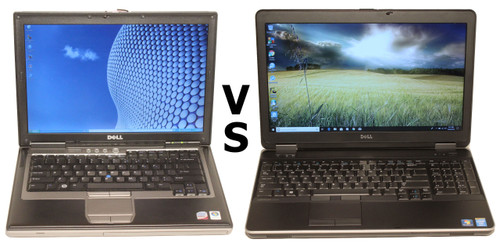Description
While there are all kinds of technical explanations about RAM (Random Access Memory) and what it does, I think the best way to put it, is to say, its like your workbench. Its where you put your projects that you are currently working on. You could have a warehouse (Hard Drive) full of projects that you plan to work on, but you only need a workbench (RAM) big enough to handle the projects that you are currently working on.
So when you turn on the computer, first thing that happens is Windows is loaded; brought into RAM, which allows you to interact with the computer, point and click on things. Then you decide to do something more, perhaps write a letter or do some accounting, so you click on the program that gets you started and that program is then brought into RAM, put on the bench, so you can use it. Then as you type in/enter information, this information that you type in/enter is stored in RAM. You have typed for a while and you decide to save your work to the hard drive (your warehouse of stuff). Now your work is in RAM and on the HARD DRIVE. If you have finished for the day, you can close whatever it is that you are doing and put your work away for another time. RAM is the computers short term memory where information is placed, while you are working with it.
When you shut down the computer (turn it off), everything in RAM, all your work, is permanently cleared from memory (RAM) so when you turn the computer on next time, you will be starting from a clean slate. So it is important to save all your work to the warehouse (the hard drive) before you shut everything down. When you load or start a program, such as your word processing program, you are not taking it off the hard drive and putting into RAM, the computer simply reads the information it needs to run the program and puts this into memory (RAM) but the program itself is still on the hard drive. You don't have to save programs before you shut down, only need to save the data that you entered/created.
If you do not have enough RAM, this will slow your computer down as it tries to get things done with limited space. Once you have enough RAM, adding more, makes very little different.
So how much RAM is enough, depends on what you plan to do. Typing a letter or checking email is not something that requires a lot of memory and you could get by with 4Gb of RAM but 4Gb is not a lot and to make your system a little more versatile and snappy, I would suggest 6 to 8Gb of RAM, if it is an option and in your budget. If you were gaming or photo/video editing then I would recommend more memory, perhaps 16Gb of RAM. Every time you add something, you add to the price, so you need to balance needs and wishes, with your budget.
I should point out that RAM is just one thing that influences computer speed and there are many other factors to consider. For example, the reason the system slows down with limited RAM is because limited RAM forces the system to be constantly putting things away and looking things up, from the hard drive, so if you get a faster hard drive, the system will speed up, even with limited RAM. A system with 4Gb RAM and very fast hard drive (SSD) may very well outperform the same system with 8Gb RAM with slower hard drive HDD.
SSD and HDD hard drives are discussed separately here in EXPLANATIONS: Tech












